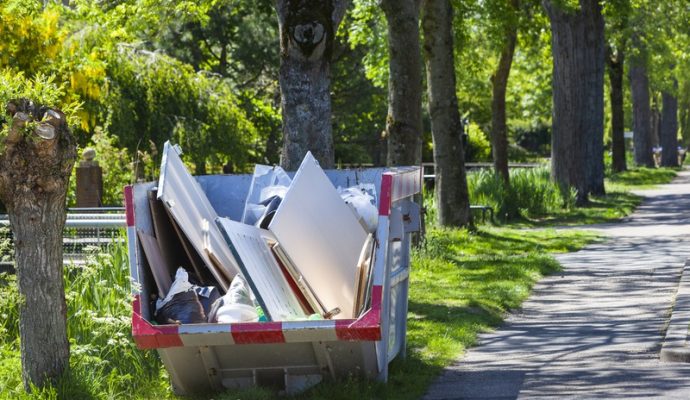Water damage in our homes or businesses can be a drastic experience. Not only does it wreak havoc on our cherished belongings and the structure of buildings, but it also opens the door for an unwelcome guest: mold. This persistent fungus can begin to grow within 24 to 48 hours after water exposure. Once it has taken up residence, getting rid of it can be a tough, costly process that often requires calling in the pros for mold removal services.
But what exactly makes the post-water damage environment so ripe for a mold invasion? Let’s dive in and explore the conditions that make mold thrive after water damage and what you can do to nip the problem in the bud.
Understanding Mold and Its Fondness for Moisture
Mold is a type of fungi that can be found both indoors and outdoors, virtually in all climates and settings. It plays a crucial role in the ecosystem, breaking down dead organic matter. However, mold becomes a problem when it decides to break down organic materials we want to keep intact, like our walls and furniture.
There are a few reasons mold loves a water-damaged environment:
- Moisture: The most obvious reason is that mold requires moisture to grow. Following water damage, if the moisture isn’t promptly removed, mold spores, which are always present in the air, find the wet surfaces an ideal spot to settle and multiply.
- Organic Food Source: When water soaks into things like wood, drywall, or carpeting, the materials begin to break down. This process releases organic compounds that serve as food for mold.
- Optimal Temperatures: Unfortunately, the temperatures we typically find comfortable in our homes are also the same conditions where mold tends to flourish.
- Lack of Light: Mold can’t photosynthesize, so it doesn’t need light to thrive. In many cases, dark, wet areas – think basements and crawl spaces after flooding – are prime real estate for mold growth.
- Time: Time is of the essence. Given enough time, what starts as a small amount of moisture can turn into a full-blown mold problem.
Managing these conditions is key to preventing mold from getting comfortable in your living or working space.
How Mold Impacts Your Health and Property
Mold isn’t just unsightly; it can also be harmful to both your health and property. For individuals with allergies, asthma, or weakened immune systems, mold can trigger reactions ranging from nasal stuffiness and throat irritation to more severe reactions. Even those who aren’t typically sensitive can be affected by lengthy exposure to high concentrations of indoor mold spores.
Moreover, mold can cause significant damage to your property. It can weaken structural elements by decomposing the materials they’re made from, which can result in long-term issues and diminished property value.
Immediate Action Is the Best Defense
To stop mold in its tracks, it’s crucial to act swiftly when dealing with water damage. Here are the steps to take after you immediately notice water damage:
- Identify and stop the source of the water if possible. Whether it’s a leaky pipe or a natural disaster, halting additional water intrusion is the first step.
- Remove standing water. The quicker you remove the water, the less chance there is for mold to grow.
- Dry out affected areas. Use fans, dehumidifiers, and other tools to dry floors, walls, and other surfaces.
- Remove wet items. If your possessions are soaked and cannot be dried and salvaged, it’s better to dispose of them to prevent mold growth.
- Clean and disinfect. Once everything is dry, cleaning and disinfecting the affected areas can help prevent the spread of mold spores.
Dealing with all this can be overwhelming, especially in large-scale situations or when the structural integrity of a building is compromised. This is when professional water damage services can step in to handle the issue efficiently and effectively.
The Role of Professional Expertise
While avid DIYers can handle some minor water damage situations, significant damage often requires professional assistance. Hiring experts who specialize in water damage restoration and mold remediation can save you time and money in the long run. These professionals have the experience, tools, and techniques to ensure your space is thoroughly dried, treated, and ready for restoration.
In Covington, KY, the humid continental climate means the conditions are often favorable for mold growth, especially after water intrusion. The expertise of local professionals accustomed to the specific challenges faced in the region can be invaluable. Their familiarity with the local environment can result in a more tailored and effective approach to your mold problem.
Advantages of Professional Mold Remediation:
- Assessment of the full extent of water damage and potential mold growth.
- Drying, cleaning, and sanitizing using industry-grade equipment.
- Use of EPA-approved antimicrobial treatments to prevent future growth.
- Restoration services to bring your property back to its pre-damage condition.
- Assistance with insurance claims and documentation of damages.
Taking advantage of expert mold services ensures the job is done right the first time, protecting your health and investment.
Prevention Is Key
Proactively preventing mold growth is far better than fighting it once it has taken hold. Here are some tips to keep your home dry and discourage mold growth:
- Maintain low indoor humidity, ideally between 30-50%, by using air conditioners and dehumidifiers.
- Ensure proper ventilation in bathrooms, kitchens, and laundry areas.
- Fix leaks in roofs, windows, and pipes as soon as they are discovered.
- Direct water away from your home’s foundation with properly functioning gutters and downspouts.
- Keep your home clean and dry. Regular cleaning can pick up mold spores before they have a chance to grow.
By being vigilant about prevention, you can often avoid the need for drastic measures in the future.
Conclusion
Water damage can indeed open the floodgates to mold growth, but understanding the reasons mold thrives in such an environment equips you with the knowledge to combat it. Quick action, thorough drying, and preventative maintenance are your best allies against mold. And when the situation is beyond simple fixes, don’t hesitate to bring in professionals to safeguard your health and property.
Remember, living through water damage doesn’t mean you have to live with mold. By taking prompt, appropriate actions and enlisting the right help when needed, you can keep your space healthy, safe, and mold-free.


